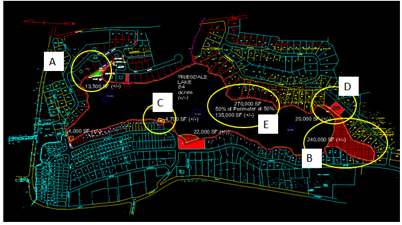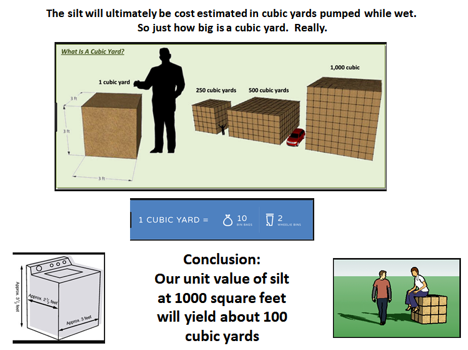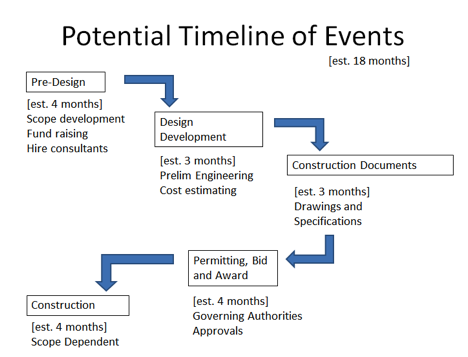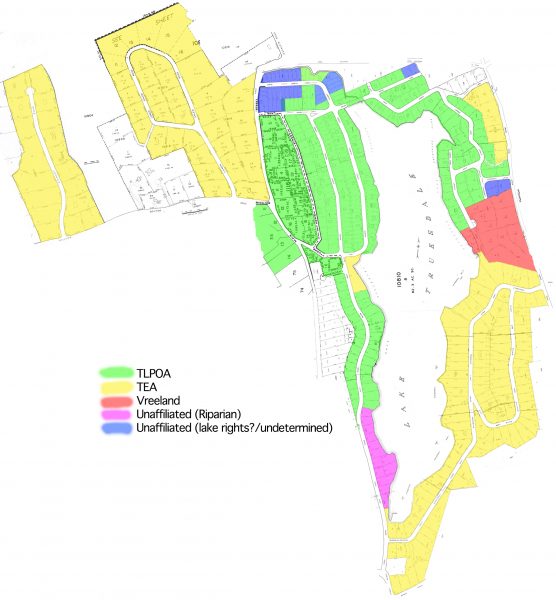Truesdale Lake Planning Group
WE WOULD LIKE YOUR SUPPORT IN CONSIDERINGÂ THE FEASIBILITY A NUMBER OF PROJECT POSSIBILITIESÂ AS PART OF OUR LONG TERM MANAGEMENT PLAN FOR LAKE TRUESDALE.
Quick links:
- 2018 Update: What we have found out so far & current project direction
- Many updates and changes have been made. Start here if you are new to reading about this.
- Hydro Dredging Question submission form
- Frequently Asked Questions (in progress, ask your questions at the link above)
This introduction is being posted for the benefit of our neighbors who were not able to attend the preliminary meeting on June 15 and as an overview for everyone who enjoys our Lake.
Earlier this year three households at the North end of the lake became interested in exploring the possibility of removing many years of accumulated silt along their lake frontage as a private effort. They did a considerable amount of research and then shared what they had learned with the TLPOA Board and Lake Committee. It quickly became evident that there was a potential for the entire lake to benefit from this method of cleanup as well as to take advantage of reduced unit prices relative to an increased scope of work by working together.

The silt filled delta at the inlet located at the lake’s north end.
On June 15 at an open meeting following the annual TLPOAÂ meeting, Cliff Munz made a presentation to interested lake residents on behalf of himself and his two neighbors who live at the north end where the silt filled delta is. He explained that rather than only dredging the area at the north end of the lake, the possibility of including this project as part of a lake wide approach for removing silt would make better economic sense and support the overall health of the lake.
The scope of the work could be expanded. It could be possible to not only remove the accumulated silt from the inlet at the north but portions of the lake perimeter and some concentrated “hotspot†areas such as the beaches and the south end of the lake. The process would involve mechanically collecting silt material down to the level of the existing sand base and pumping the slurry to specified locations where it could be dried and redistributed as a new planting medium. Of course this would all need to be done in accordance with approved plans submitted for permits.
The idea was presented to the Town of Lewisboro’s wetlands inspector for preliminary feedback. The response was positive. He advised that we meet with the other agencies would be involved that presenting the proposed work scope as a single comprehensive lake wide plan for the benefit of the entire lake community.
BELOW ARE SOME HIGHLIGHTS FROM THE JUNE 15 PRESENTATION
What does hydraulic Dredging involve?
 It involves a remarkable piece of equipment called a “muck grinder†that floats on pontoons and inches itself along via stretched cables while extending an articulated arm, with a head that resembles a snow blower, into the silt until it hits the original clean sand base. The material it encounters is cut, in six foot wide swaths, and then ground up into a semi-fine slurry that can be pumped through hoses over a distance to fill strategically located “Bio-bagsâ€.
It involves a remarkable piece of equipment called a “muck grinder†that floats on pontoons and inches itself along via stretched cables while extending an articulated arm, with a head that resembles a snow blower, into the silt until it hits the original clean sand base. The material it encounters is cut, in six foot wide swaths, and then ground up into a semi-fine slurry that can be pumped through hoses over a distance to fill strategically located “Bio-bagsâ€.
The muck grinder has a grinding head and articulated arm.

The Bio-bags are filled with wet silt which will de-water and dry out
The bio bags will let filtered water escape while retaining the harvested silt until it dries. The material can now naturally “dewater†and be used as new planting medium or possibly even new fill material at eroded shorelines. The goal is to reuse the material and avoid the need to truck it off site.
What are some of the benefits of dredging?
It has been explained to us that by excavating the silt down to the existing sand bed, weed seeds will be ground up and removed. This will mitigate potential re-germination in those areas. The reduction of, and maybe even the elimination of chemical treatment, might then be a possibility.
Removal of silt will increase the clear depth to better accommodate boating and swimming along the shoreline. Although at times during the summer, weeds and algae will most likely still be part of the natural ecosystem of our lake, it will be much easier to keep up with the normal accumulation process. The incorporation of hydraulic dredging into a holistic approach to comprehensive lake management by our new lake management consultants “Pond and Lake Connection†should improve the overall lake conditions for everyone to enjoy. Keep in mind that having a healthy lake can be an essential part of maintaining healthy property values as well.
Why is there a preference for a lake wide approach instead of multiple private projects?
Try to keep things simple. We have been told that the governing authorities involved in the permitting process prefer a single comprehensive permit application rather than multiple small spot projects that each need to be individually permitted and completed before the next one can be started.
“Soft Costs†including such items as engineering fees, filing and permitting fees, which are required prior to any work being done, could be equally shared among the many lake residents with lake rights. This would make the initial cost much more manageable.
We believe that property values as well as the use and enjoyment by everyone with deeded lake rights will be significantly improved.
Pond and Lake Connections, the company that manages Truesdale Lake, would help to coordinate with the dredging project to provide a comprehensive lake management strategy.
Where are the targeted areas needing the most attention?
We conducted a preliminary assessment of the lake and identified areas that would immediately benefit from hydraulic dredging.
- Area “A†is the north end and inlet
- Area “B†is the hevilly silted south end
- Area “C†is the TLPOA Beach front and associated properties
- Area “D†is the TEA Beach front and associated properties
- Area “E†are lakefront properties along the perimeter

The areas needing the most attention right now.
What types of costs are associated with such a project and how is the removal of the silt quantified?Â
Typically a project like this will have “Soft Costs†for those items that need to be addressed before any physical work can begin and “Hard Costs†for equipment, materials and labor required to physically execute the work. The amount of silt removed can be quantified by volume in “Cubic Yards per thousand square feetâ€.
Soft Costs:
The costs for Professional Services for planning, site engineering and permitting are not area specific. These costs would be quite manageable if shared equally among all the TLPOA, TEA and Unaffiliated members with deeded lake rights. We will solicit proposals from civil engineers familiar with this type of work as part of the preliminary budget estimate.
Hard Costs:
Once all permitting has been completed the physical work can begin. These costs are area specific for the contract labor, equipment and materials to remove and/or relocate the silt. Within this category are two items to consider. The first called “initial mobilization†involves the cost to initially get the equipment on site,  in the water and ready to  dredge. This cost is somewhat fixed whether dredging a single cubic yard or hundreds of cubic yards.and can be shared equally among all the lakefront properties scheduled to be dredged. The greater the number of participants the more affordable it would become.
The second hard cost item is area specific. This is the removal of silt along the shoreline of each lakefront property within the scope of work. A unit of measure to hydraulically dredge the silt in these areas has been developed based on a typical number of cubic yards that a thousand square feet would yield.

With the help of “Sacred Waters Dredging†we have been able to figure a rough value of 25.00 per cubic yard pumped. If each rectangle shown above represents 1000 square feet yielding about 100 cubic yards of silt, we can estimate that 1000 square feet could cost about $2,500 to pump. The number of rectangles in front of each lakefront will vary from lot to lot but it’s a good start.

What kind of steps could be involved in such a project?
It’s a process that will take some time but in the end could be well worth it.
SO WHAT’S NEXT?
Truesdalelake.com will be the central location to find periodic information about the progress towards making this potential dredging effort a reality.
We need to know how many of you from each Lake Association as well as the “unaffiliated property owners†are in support of such a project. The more supporters we can count on the more manageable the costs will be.
GOT QUESTIONS?
Truesdalelake.com has the ability to collect your general questions. Please submit your questions here. We will then research and assemble as many responses as we can for posting to our Q&A page.
Shortly after the responses appear on the website we will make an announcement to set a date and place for a public technical information presentation by a dredging contractor who will be able to answer technical questions and have his equipment on display.
WE CAN DO THIS
With enough resident support, adequate funding, and proper permitting the dredging project could be a significant step towards a more holistic long term lake management plan for a healthier ecosystem that we can all enjoy for years to come.
Look for our monthly progress postings in the “Projects†section of Truesdalelake.com

